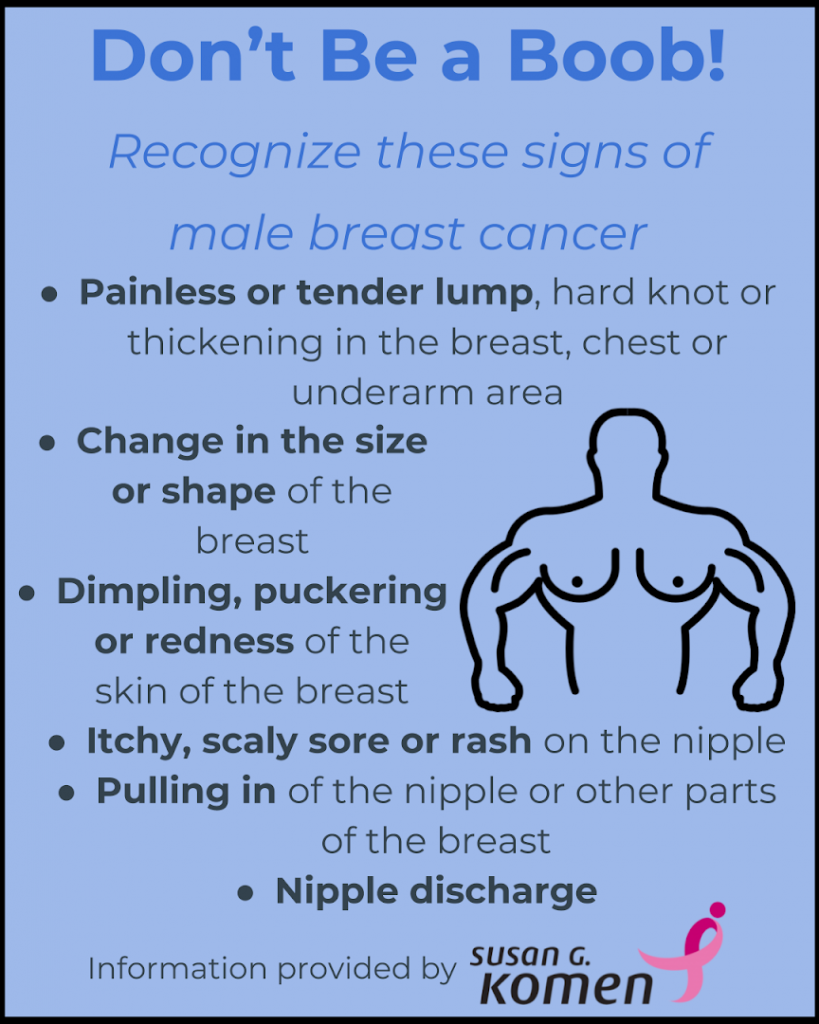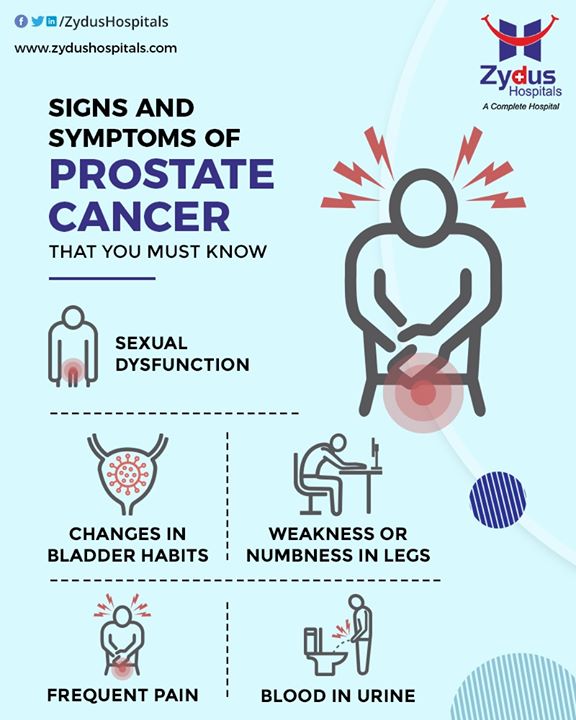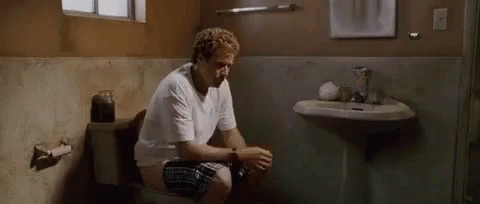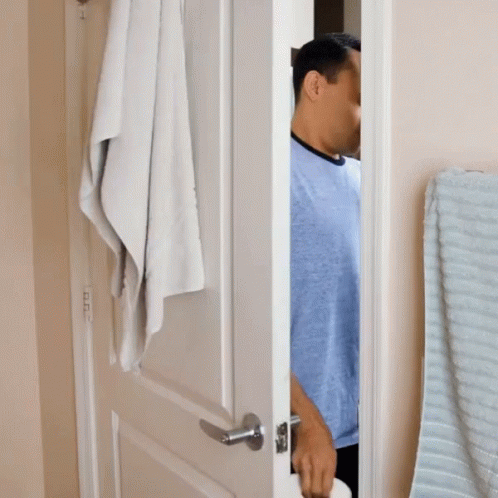- This topic has 27 replies, 2 voices, and was last updated 2 years, 9 months ago by JessiCapri.
-
AuthorPosts
-
May 5, 2021 at 4:38 pm #169793
Women

Young adults CAN and DO get breast cancer. When it comes to breast cancer symptoms and signs of the disease, you are looking for more than just a lump. Breast cancer statistics show that nearly 80% of young adults find their abnormality themselves. So it's important to get familiar with your breasts and aware of the signs and symptoms. Tell your doctor right away if you notice any changes in your breasts.
Men
 May 5, 2021 at 4:52 pm #169794
May 5, 2021 at 4:52 pm #169794
Tell your doctor right away if you notice any symptoms
May 10, 2021 at 8:52 pm #169795 May 24, 2021 at 6:01 pm #169796
May 24, 2021 at 6:01 pm #169796 June 3, 2021 at 3:50 pm #170427
June 3, 2021 at 3:50 pm #170427NETTLE TEA.
Steeping dried leaves and drinking tea dates back thousands of years. It’s thought to originate in China, where it was used medicinally. Today, people drink tea for many reasons, including its taste, stimulating or calming properties, and health benefits. One popular herbal tea is nettle tea.
What is nettle?
Nettle, or stinging nettle, is a shrub that comes from northern Europe and Asia. Its scientific name is Urtica dioica. The plant boasts pretty, heart-shaped leaves and yellow or pink flowers, but the stem is covered in tiny, stiff hairs that release stinging chemicals when touched.The leaves, stem, or root from the nettle plant can be crushed and made into powders, tinctures, creams, teas, and more. While people have used it for centuries as an herbal medicine, modern research also supports many of the potential health benefits of nettle and nettle tea.
1. Urinary tract health
Nettle may help flush harmful bacteria from the urinary tract. This can benefit people who have urinary conditions, such as benign prostatic hyperplasia (BPH). BPH causes an enlarged prostate gland in men. This can cause pain or other problems urinating.According to one 2013 study Trusted Source, men with BPH who took nettle extract had fewer clinical symptoms than those who didn’t.
Nettle may also help support any medications you’re taking for infections or conditions related to the urinary tract. Talk to your doctor first about any possible interactions between herbal remedies and medications you take.
2. Arthritis and pain
Nettle has historically been used to treat pain and sore muscles, especially related to arthritis. The Arthritis Foundation suggests that nettle tea may also reduce the inflammation and pain association with osteoarthritis.3. Blood sugar management
Nettle has shown some promising effects on blood glucose levels. It may help the pancreas make or release more insulin, the hormone that lowers blood sugar.In a 2013 studyTrusted Source, nettle leaf extract lowered blood glucose and A1C in a group of people with type 2 diabetes who were taking insulin as well as oral diabetes medications.
4. The power of polyphenols
Nettle is high in plant chemicals called polyphenols. A review of the research on polyphenols suggests that these powerful compounds may play a role in the prevention and management of chronic diseases related to inflammation, such as diabetes, obesity, cancer, and heart disease.In particular, polyphenols from nettle extract have shown some exciting potential for treating breast cancerTrusted Source and prostate cancerTrusted Source. Plants like nettle also contain potent antioxidants, which are substances that protect the body from aging and cell damage.
How to make nettle tea
Ingredients
1 cup of nettles
4 cups of water
1 tbsp of sugar or honey (optional)Method
STEP 1
Find some nettles and cut of the leaves with as little stem as possible (the older looking nettles are sweeter). Fill up a cup full and wash them thoroughly in warm water. Put the nettles in a large saucepan with 4 cups of water and add the sugar or honey.
STEP 2
Put the pan on the hob and bring to the boil, then simmer for 15 minutes. Taste the tea and add any more sugar if needed. Serve in mugs with a nettle for decoration.
STEP 3
(For the iced-tea) Put the tea on the side for 30 minutes then transfer to the fridge for 2 hours. Serve with ice and a nettle for decoration.June 7, 2021 at 12:33 am #170681 June 24, 2021 at 1:32 am #171445
June 24, 2021 at 1:32 am #171445 June 24, 2021 at 1:34 am #171446
June 24, 2021 at 1:34 am #171446 July 21, 2022 at 11:38 am #199592
July 21, 2022 at 11:38 am #199592Dangerous UK Plant.

The Giant Hogweed can cause this…



Is giant hogweed native to UK?
Giant hogweed is a fast-growing invasive plant.
It mainly grows next to water, in damp meadows or on derelict land. It grows exclusively by seeds, which can be planted deliberately or carried by wind or water. It can cause harm to humans and animals and although not native to the UK, it’s now widespread.
It originates from the Caucasus Mountains and Central Asia. It was first introduced to the UK as an ornamental in the 19th century where it escaped and naturalised in the wild
Glyphosate: ~ Good control of giant hogweed and common hogweed can be achieved by applying glyphosate during April-May when the plants are actively growing but still small enough to be easily treated.
Treatment at the recommended doses will effectively control giant hogweed for the full growing season.
There are no regulations stating that you need to notify anyone Giant Hogweed is growing on your land.
However reporting the growth of the plant to the Non-native Species Secretariat website (NNSS) does help with getting a handle on how quickly it’s spreading across the country.July 21, 2022 at 11:52 am #199593Careful of diets. Make your weight loss last and stay healthy and wise.
Healthy ways to lose weight.
The NHS’ top tips for losing weight include:1. Don’t skip breakfast. Despite what you might think, skipping breakfast won’t help you lose weight. You could miss out on essential nutrients your body needs and end up snacking more throughout the day because you feel hungry.
2. Eat regular meals. Eating at regular times during the day helps burn calories at a faster rate and reduces the temptation to snack on foods high in fat and sugar. So make sure you’re getting your three meals a day. Do not over eat with big portions.
3. Eat plenty of fruit and veg. This one’s fairly self-explanatory, as fruit and veg is low in calories, fat and high in fibre, however a healthy diet is also a balanced diet, allowing for many other food groups too!
4. Don’t ban foods. There’s no need to ban any food groups to lose weight, especially the ones you like. Banning foods will only make you crave them more. You can also enjoy the occasional treat too, within moderation. Eat healthier and eat fast food as a treat only.
5. Cut down on alcohol. A standard glass of wine can contain as many calories as a piece of chocolate. Over time, drinking too much can contribute to weight gain (though you don’t need to cut it out completely, unless you have another medical/personal reason for doing so, of course).
6. Getting more active is also a key part of losing weight and keeping it off, as well as helping to boost your mental health. Exercise is when you do things that make you pant, make your heart beat faster, make you sweat and make you feel you have achieved milestones, no matter how small. Exercise is important to keep you fit and healthy in body and mind. Its also good for your sex life!!!
7. Making these rules a lifestyle, rather than a phase will help keep the weight off and keep you healthy.
October 15, 2022 at 12:08 pm #200235Found this interesting article by Marie Claire Dorking· Here’s the interesting bits and pieces and a few ad ons.
Over or under? Why hanging toilet roll ‘the wrong way’ is a health threat
You might not realise it but the world is divided into two distinct camps: those who hang the toilet paper in the ‘over’ position, and those who put the roll in the ‘under’ position.


People aged between 45 to 54 were most frustrated with seeing the toilet roll on the holder the wrong way, with 25 to 34 years olds uncovered as the least frustrated with making the bathroom error.
So here’s the way it should and shouldn’t go.
It’s worth noting at this stage that there is actually an officially documented ‘right’ way to place toilet paper onto the holder, and it seems that those in the ‘under’ camp have been hanging their toilet paper wrong this entire time.
The “1891 patent for the toilet paper roll” (yes, that exists) literally states that the end of the roll should be hanging off the exterior. In other words, the patent, created by the inventor of toilet paper Seth Wheeler, reveals the correct way to hang toilet paper on the holder is actually over. Sorry under folk.

There’s a more important reason why toilet roll should be hung correctly.
Hang toilet roll the right way for good hygiene
Aside from some niggly family arguments between the over-people and the under-people, there’s actually a pretty important reason we should be taking note of Wheeler’s patent, particularly in recent years – cleanliness.A study performed in 2011 by the University of Colorado found that 19 different types of bacteria were found on a range of surfaces in bathrooms, and we know that COVID can live on surfaces for up to 72 hours.”
The moment when a toilet user’s hands are most likely to carry bacteria is when they reach for toilet paper.
If the toilet paper is hung over their fingers, they’ll only touch the toilet paper that they’ll be using, which will subsequently be flushed.
However, if the toilet paper is hung under there’s a good chance their fingers will brush the wall as well, leaving a deposit.
If so, every subsequent toilet-goer who reaches for the paper runs the risk of not only of picking up the bacteria that’s been deposited already, but also leaving more for the next user to pick up.
“When you put the toilet roll on the bar so that the paper hangs under, you increase the risk of touching around to get the paper from underneath,” Charalambous summarises.
“It’s also normally closer to the wall in this position, which increases the risk of coming into contact with bacteria and droplets on the wall surface.”
Charalambous says if you are unfortunate enough to go to the toilet after someone who has COVID-19 and the toilet roll is under, not over, you are increasing your chances of coming into contact with the virus.
“There is also a reason why toilet roll bars that have flaps on have the flaps going over, not under,” she adds.
Other than wanting to stay well generally, hanging the roll in the under position can also increase the risk of spreading E-Coli and other nasties.
In their defence to getting it wrong all these years, those who believe under is the correct way to hang the roll argue that it looks more aesthetically pleasing as well as being more environmentally friendly.
They believe that putting the toilet roll under results in you using less toilet paper as the paper doesn’t roll as easily.
But even if they do have a point (are you in this camp?), in terms of the official patent and cleanliness over-people can definitely chalk this one up as a win.
If, after learning what science has to say about the direction you hang your toilet paper, unders still refuse to become overs, the very least they can do is not be that person who leaves the roll empty.

 October 20, 2022 at 11:18 pm #200326
October 20, 2022 at 11:18 pm #200326lol @Vaughan I have always been an ‘over’ position.
 November 17, 2022 at 9:32 pm #200651
November 17, 2022 at 9:32 pm #200651 November 17, 2022 at 9:36 pm #200652
November 17, 2022 at 9:36 pm #200652MEN:
Prostate Health
 November 17, 2022 at 9:38 pm #200653
November 17, 2022 at 9:38 pm #200653
-
AuthorPosts
- You must be logged in to reply to this topic.
Optimizing new Forum... Try it, and report bugs to support.



















